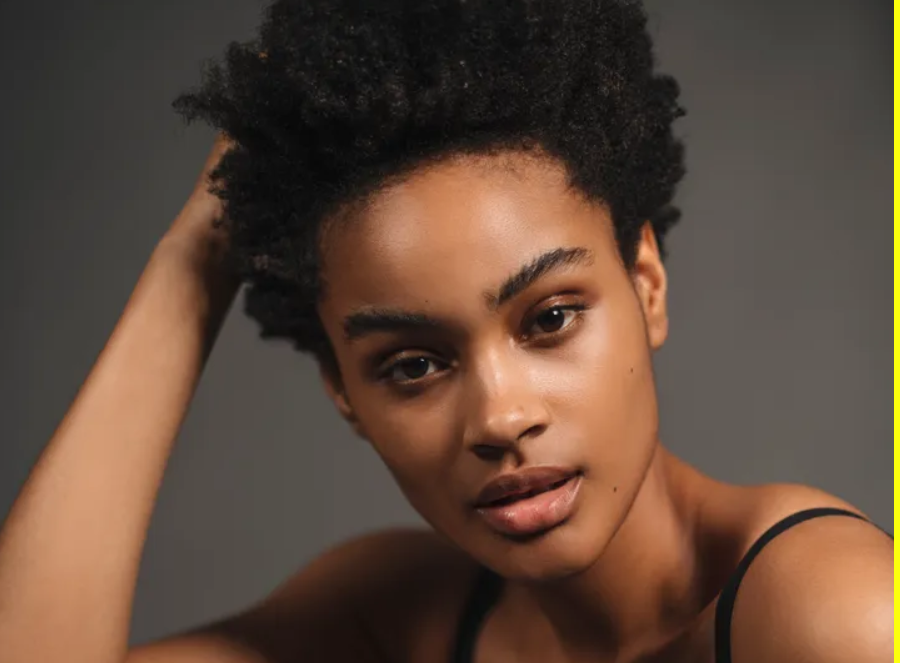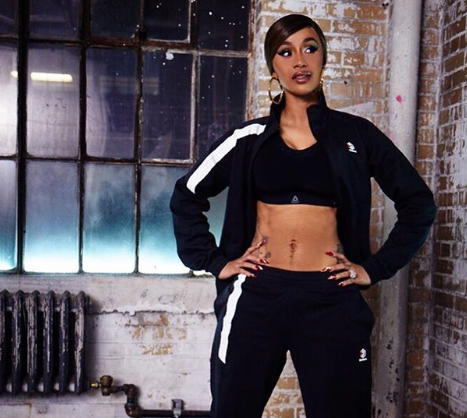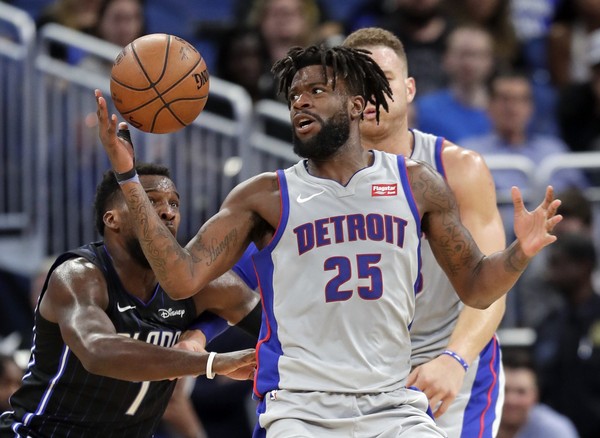Tag: huffingtonpost
I’m A Black Model And This Is What My Hair Goes Through
Jade Williams shares her challenges of having natural hair in the modeling industry
Article via HuffingtonPost
Having natural hair as a Black woman in the modeling industry can help you stand out, but it also comes with challenges. Many hair stylists for photo shoots and runways aren’t trained to work with different hair textures — a dilemma that Jade Williams, a 24-year-old model with JAG Models, is all too familiar with.
Up until she was 18 years old, Williams had always chemically straightened, or relaxed, her hair. But then she decided enough was enough.
“I don’t feel defined by my hair, but it symbolizes me embracing my full self,” Williams said.
Williams spoke to HuffPost about how she embraced her natural hair, the struggles that arise in an industry that isn’t always welcoming of — or trained in — natural beauty, and why she continues to celebrate her look despite these issues.
You embrace your natural hair now, but was that always the case?
In the Black community (more so back in the day), we got our hair chemically straightened from a very young age. When I was 3 or 4 years old, my mother decided to have my hair chemically straightened because my hair was extremely coarse and thick. I would get my hair relaxed every six weeks. Imagine the money spent and damage that has on your scalp over the years! I had many hairstyles with my relaxed hair: razor bobs, blunt bangs, shaggy cuts. I’d been getting that done up until I was about 18 years old.
What was it like getting your hair chemically straightened for that many years?
I’ve experienced chemical reactions, burns and rashes from relaxers, and this is something that is common and a risk people take to have straighter, more manageable hair. This is something that was normalized in the Black community— not so much today, but when I was younger. All for straight hair. This is a direct tie to what we call assimilation in the Black community, where we try to adapt more European standards of beauty.
When did you decide to break from that beauty standard?
I wanted to since I was a younger teen, but I was afraid it would take too much time to do (it takes more time to do natural hair as opposed to chemically straight hair). And I felt that society — or even kids — tease natural hair, especially hair textures like mine where it’s not really a loose curl, it’s a really tight, kinky curl.
Within the Black community, there are the terms “good hair” and “bad hair.” Good hair is usually depicting a Black woman with curly, silky hair. Bad hair would be more kinky, coarse hair like mine. That was something that I was self-conscious about.
But when I graduated from high school and was finally confident enough to express my true self, I decided to stop relaxing my hair. Some people cut all their hair off and start fresh. I was too scared to do that, so I transitioned.
What was that transition like?
After months of not using relaxer, my hair became difficult to style ― I had half an Afro with straight hair at the end. About a year after transitioning, I was invited to a pool party. The thought of me jumping in the pool with my hair like that was terrifying, so I got scissors and got to cutting. That was one of the most liberating moments of my entire life. I went to the pool party, jumped into the pool, and out came me and my voluminous curly Afro. I felt like me, the beautiful Black queen that I was always destined to be. I’m glad I was able to break that cycle and live in my truth.
And does it take more time to wear your hair natural?
People just have the perception of that. It depends on how you want to do your hair naturally. For example, the way I have my hair now is called finger coils. You section your hair into 100 or more sections, and you twist it around your finger to give it an illusion of dreadlocks. That takes about three hours to do.
So let’s talk about modeling. How did you get your start?
I’ve been into modeling since I was a kid. I was always the girl who was just natural in front of the camera: dancer, model, performer. When I was in college, I was freelance modeling and traveling between Washington, D.C., and New York City. I went to Howard University for graphic design. When I graduated, I wanted to really pursue my passion for modeling. So when JAG reached out, it was the perfect opportunity to do it full-fledged. I signed with them last April.
How do you feel your natural hair is viewed in the modeling industry? Has it held you back?
No, I actually feel the complete opposite. When it came to my natural hair, it was actually the thing that put me on the map. The way that I wore my natural hair was very bold. I just let it grow and do its own thing. I let it shape the way that it naturally shaped. I didn’t really try to keep it up too much doing tedious styles — I just let it be.
I do think that it’s very intriguing to clients. People want to capture me and my full essence. However, when I get on some sets, they don’t have the proper team to tend to my hair type, which is sad and unfortunate. So that’s the thing: You have clients that are obsessed with my hair but don’t really invest in people that have knowledge of it.
Is it difficult having people work on your hair who don’t have the proper skills?
I’ve heard comments like, “It feels like I’m knitting when I’m doing your hair,” or, “Keep it wild.” The term “wild” is very offensive because historically, Black people have been compared to animals. When people say things like that, it’s a trigger point in a lot of ways. I’ve had to show a hair stylist how to tend to my hair, and I’ve had a team wanting my hair to be bone straight. If they do straighten my hair, it’s a possibility my hair will not revert back to being curly. It might cause damage, it might break off — and that will, in turn, hinder my opportunities in the future.
Have you ever had someone try to straighten your hair on set?
Yeah, I did have an experience where half my hair was straightened. It was one of my first gigs. We had a time frame and they just thought that the hairstylist should be able to straighten my hair within 45 minutes, and that’s not the case because my hair is very thick. They had to basically try to do a half-straight, half-curly style that turned out horrible. Even though I shared that I was uncomfortable with my hair being straightened, I felt the need to be quiet.
But now I’ve learned that JAG is very supportive of me speaking up about what I would allow when it comes to my hair.
What changes would you like to see in the modeling industry in regards to hair and diversity?
Black hair is something that every team needs to know. You can’t use every product that you find in hair stores. You shouldn’t use hairsprays because it damages our hair ― even certain heat settings and things like that. And I don’t think it’s taught enough to hair stylists on set.
I would also love to see more teams have knowledge of natural hair. Sometimes you’ll see a girl with an Afro or curly hair, and you’ll have other girls in the same job who don’t have that hair type get all these intricate styles. Since the stylist doesn’t know how to do the Afro hair, it’s just left alone. It feels like, “We have no clue what to do with the hair, so we’re going to leave it how it is.”
Do these obstacles ever make you consider changing your hair?
No. Regardless of these obstacles I and other Black women have with our hair, this journey plays a big role in the people that we are today. I’m told my hair makes me “different,” but I think it just makes me me. This is how I was created and happens to be a symbol of my ancestry. In Black culture, we call our hair “crowns” to remind us of who we were before oppression: royalty. My crown defies gravity, my crown is fierce, and my crown is love.
This interview has been edited and condensed for clarity.
Check out some Lovelyti videos:
Dope Beauty Skin & Hair Care Launch Party~ Twin Cities
Benny Harlem (THE Black HAIR Scammer) EXPOSED!! #RECEIPTS ?
Black Twitter GOES OFF on “Shea Moisture” for white-washing their hair products and tv commercials
Cardi B Responds To Fan Who Said She Isn’t A Good Role Model
Article via HufingtonPost
The rapper said she feels trapped and “sad” about the position she’s in.
Don’t tell Cardi B that she can’t speak her mind.
The rapper had words for a fan on Twitter Saturday after the follower said that Cardi B wasn’t a good role model. The comments were in response to Cardi tweeting “I’m just nasty like that.”
“I love you ALOT but I don’t agree with the messages you’ve been sending us young girls,” the fan tweeted at the rapper. “So many of us look at you as a role model and that should send a very loud message.”
Cardi B thoughtfully responded to the criticism in a tweet.
“For these past two years I been watching what I say and I haven’t been myself. I been feeling [trapped] and sad cause it’s not ME but everybody tell me to be it for me to be this ‘role model’ and guess what? People still spit my past right in my face so for now imma be my old self again,” she said.
The rapper’s honest tweet earned praise from many of her followers.

Recently, the rapper apologized for past comments on a recently resurfaced, years-old Instagram Live clip in which she admitted to drugging and robbing men when she worked as a stripper.
The comments immediately caused an intense backlash against the 26-year-old entertainer.
Cardi B said it was something she “needed to do to make a living” at the time and said that she had “a past that I can’t change we all do.”
“I never claim to be perfect or come from a perfect world [with] a perfect past,” she wrote. “I always speak my truth I always own my shit.”
Check out some Lovelyti videos:
Azealia Banks Says RZA is a “cokehead” & Cardi B is an ”Illiterate rat!”~ Cardi responds!!
Part 2~ Cardi B DELETES Her Instagram Account After Azealia Banks’ READS Her For The Filth
Azealia Banks accuses Cardi B of Colorism during her beef with Nya Lee!
Reggie Bullock’s Tattoo Became A Teachable Moment On His LGBTQ Advocacy Journey
The Detroit Pistons’ small forward says he feels “blessed” to be a queer ally in professional sports.
Article via Huffingtonpost
U.S. Life Expectancy Continues To Fall As Overdose And Suicide Rates Soar
It’s the longest-running decline in U.S. history since World War I, when a flu pandemic killed almost 700,000 people nationwide.
American mortality rates have continued to rise alongside worrying upticks in overdose and suicide rates, according to three new government studies from the Centers for Disease Control and Prevention.
Life expectancy dropped to 78.6 years in 2017, down from 78.7 in 2016, contributing to the longest-running decline in U.S. history since World War I, when a flu pandemic killed almost 700,000 people nationwide between 1915 and 1918.
The primary group that saw jumps in their death rates were white Americans ― a 0.6 percent jump for white males and 0.9 percent for white females, according to the CDC.
“Life expectancy gives us a snapshot of the nation’s overall health and these sobering statistics are a wakeup call that we are losing too many Americans, too early and too often, to conditions that are preventable,” CDC director Robert Redfield said.
The 10 leading causes of death remained the same, with heart disease and cancer at the top of the list. Yet a second CDC report revealed that the rate of drug overdoses jumped 9.6 percent between 2016 and 2017, totaling 70,237 deaths last year. The rate of death from synthetic opioids such as fentanyl jumped by 71 percent between 2013 and 2017 and by 45 percent between 2016 and 2017 alone.
The age groups particularly affected in 2017 spanned the 25-34 range, as well as 35-44 and 45-54. The highest overdose rates were also concentrated in only a handful of states, including West Virginia, Ohio, Pennsylvania and the District of Columbia.
A third report found that suicide rates also continue to climb, particularly among rural Americans. Between 1999 and 2017, the suicide rate increased by 33 percent. Men saw a 26 percent jump while women experienced a 53 percent increase. More remote areas have seen rates almost twice as high as in urban areas.
“I think this is a very dismal picture of health in the United States,” Joshua M. Sharfstein, vice dean for public health practice and community engagement at the Johns Hopkins Bloomberg School of Public Health, told The Washington Post. “Life expectancy is improving in many places in the world. It shouldn’t be declining in the United States.”
Article via HuffingtonPost
Kanye West, Brett Kavanaugh And Alex Jones Audition For Big Bird On ‘Colbert’
Actor and puppeteer Caroll Spinney is leaving his post as Big Bird after playing the role for nearly 50 years. That certainly leaves a sizable hole in the heart of “Sesame Street.” But who can possibly Spinney’s very big and oddly shaped shoes?
On Friday’s “Late Show With Stephen Colbert,” some famous would-be replacements auditioned to take over for our big feathered friend. Supreme Court Justice Brett Kavanaugh brings up beer a lot during his tryout, Infowars host Alex Jones rants about conspiracy theories, and rapper Kanye West uses his time to talk about… well, Kanye West.
See the whole clip above.
Article via HuffingtonPost






